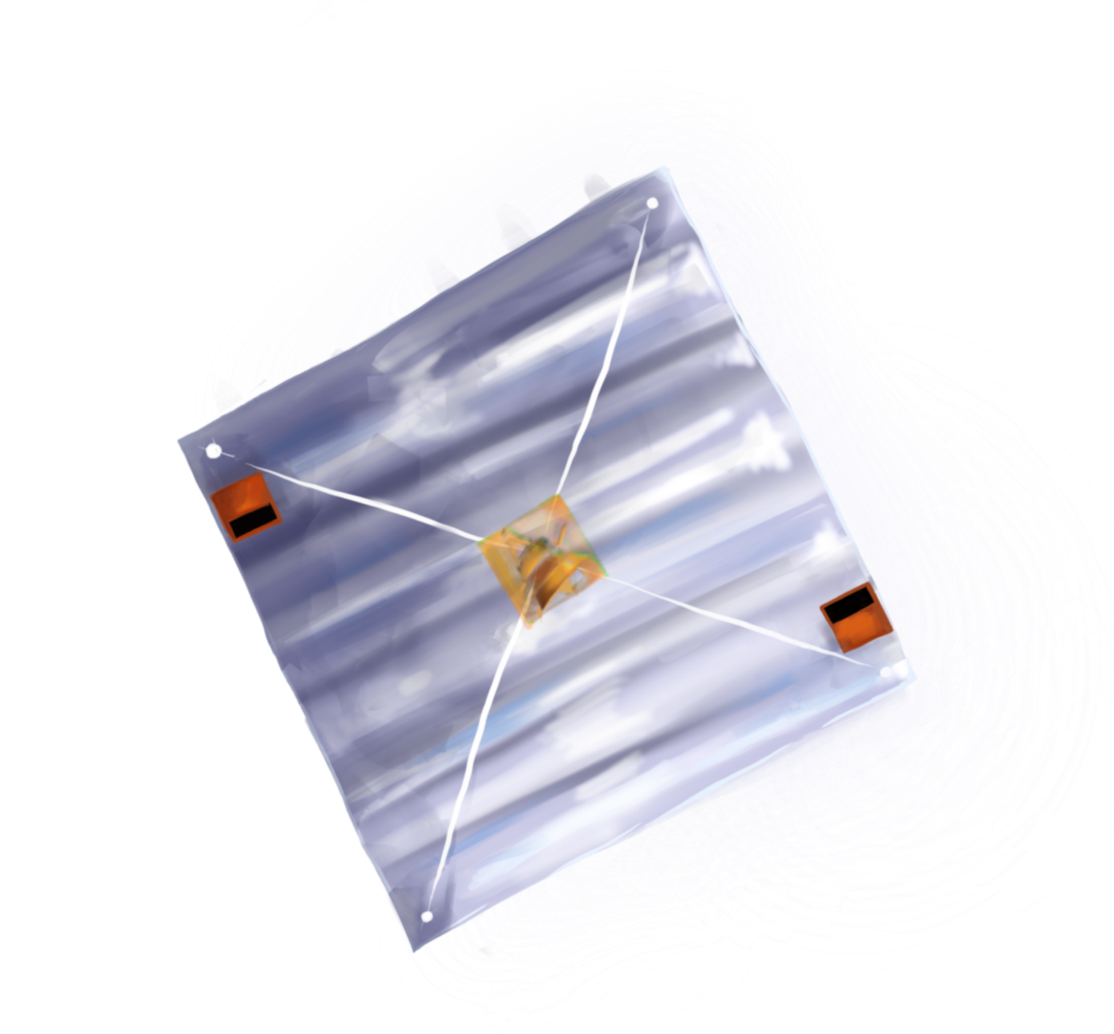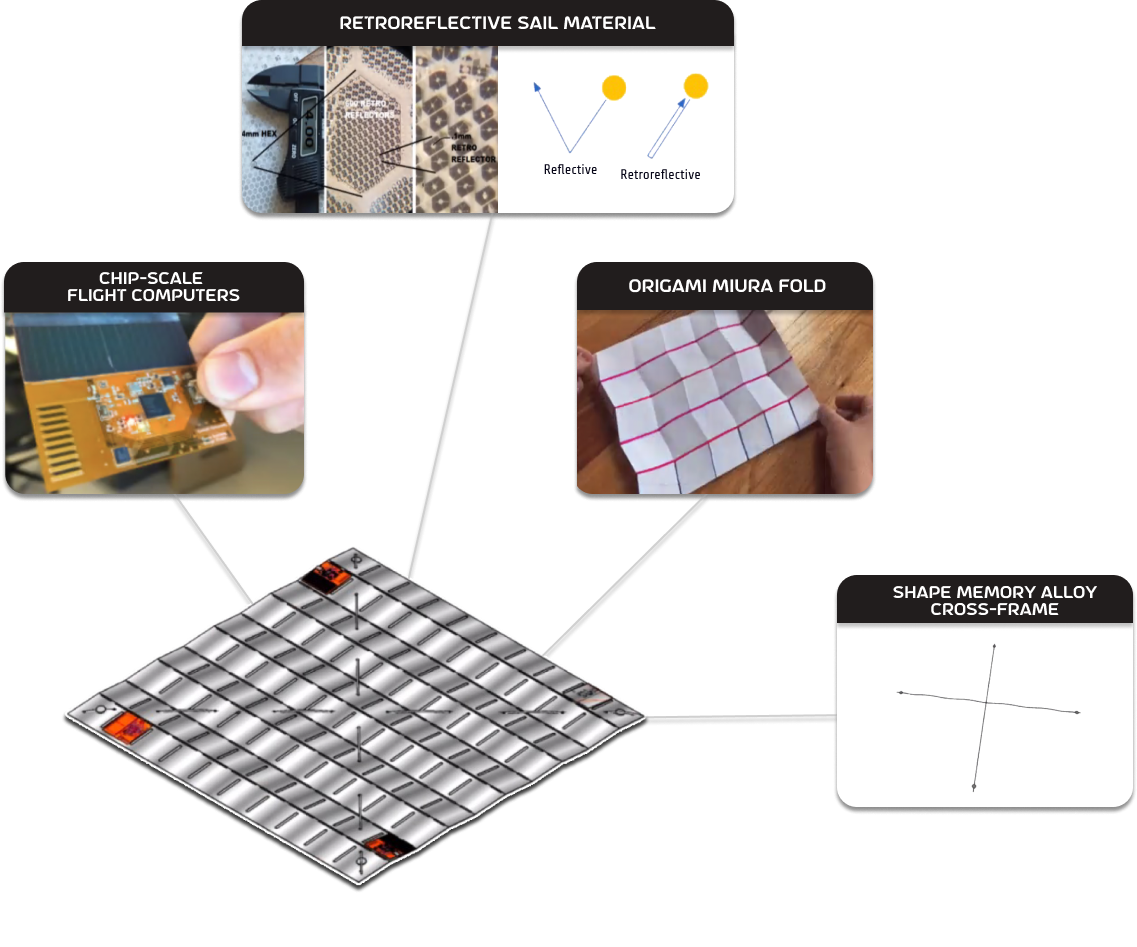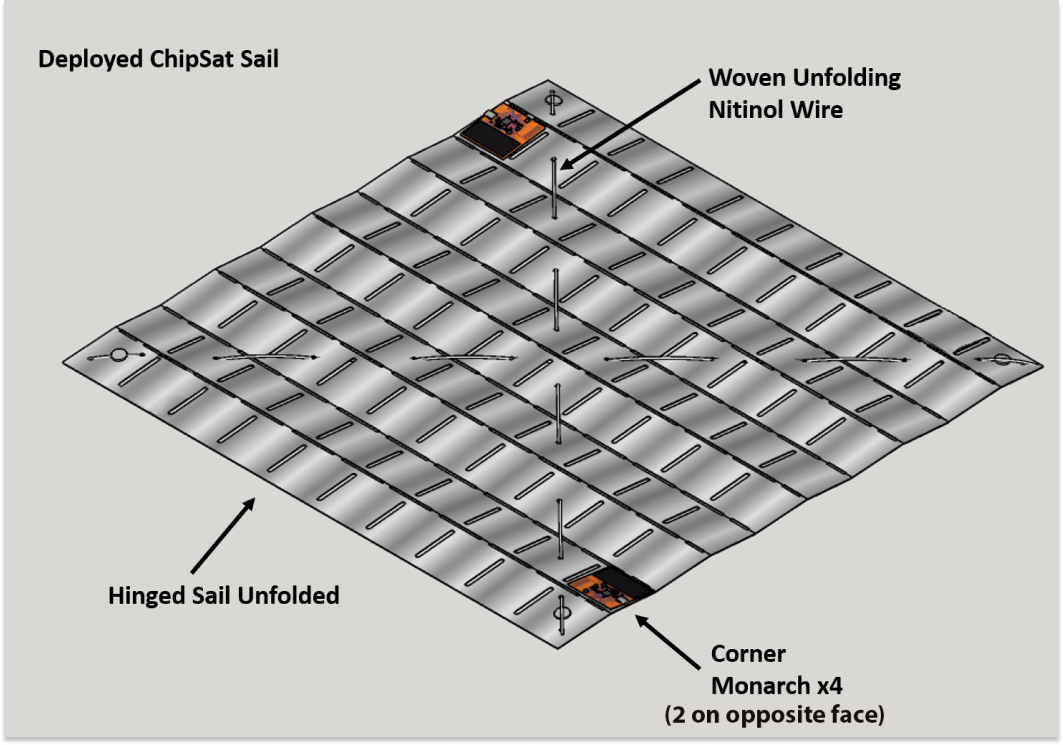lightsail
Alpha CubeSat will deploy the first-ever free-flying, retroreflective light sail. Its tiny ChipSat computers also allow Alpha to be the smallest light sail yet. Someday, we may send an entire fleet of these light sails to other stars.
Alpha CubeSat will deploy the first-ever free-flying, retroreflective light sail. Its tiny ChipSat computers also allow Alpha to be the smallest light sail yet. Someday, we may send an entire fleet of these light sails to other stars.

Light sails are a lot like boat sails. But instead of being pushed by wind, light sails are pushed by the actual particles of light (photons) that strike them. This means light sails don’t need to chuck any propellant behind them like a typical rocket or spacecraft—no heavy fuel tanks to carry, or even any engines. That’s especially helpful in long-term missions to another star.

Compared to previous sails such as The Planetary Society’s LightSail 2, Alpha’s sail is much, much smaller (57.5 by 57.5 centimeters, 0.04 millimeters thick)—and together with its 4 ChipSats weighs less than 100 grams.
This gives the sail a low mass per unit area, allowing it to accelerate faster and shorten our travel time. The ChipSats function as flight computers, allowing the light sail to completely disconnect from its host spacecraft (the CubeSat). This makes it the first free-flying light sail in the world, able to fly completely solo.

Alpha’s light sail is made of polycarbonate. Two Nitinol wires form an X across the sail, and serve as a force on each corner to unravel the Miura fold. The compartment holding the light sail takes up half of the CubeSat’s volume. Burn-wires hold back a spring-loaded latch on the compartment door. After the CubeSat receives the command to deploy, the burn-wires are cut, and the door swings open. The light sail unfolds near-instantaneously. Bigger light sails often take minutes to hours.

Alpha CubeSat is launching from the International Space Station, which is in Low Earth Orbit. This means Alpha’s sail will last for a couple days at most before atmospheric drag (the friction due to tiny particles) will slow it down, causing it to fall.
Those days will be jam-packed with a whirlwind of light sail data—we’ll learn just how well Alpha’s innovative design works.

Breakthrough Starshot hopes to send a fleet of one thousand light sails to our nearest star system, Alpha Centauri.
They'll do this with the help of an array of lasers, which could accelerate the sails to 20% the speed of light after just a few minutes.
There's a lot of progress to be made before this can happen: we need to protect the sails from space dust, prevent the sails from being incinerated by the laser beam, and make our flight computers even smaller than the ChipSats.
Alpha serves as a valuable test along the way, as we reach for more efficient sails—and, at last, for the stars.
